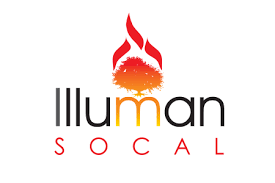When Cultura and Religion Meet at Christmas
by Bob Juarez, Co-convener
I am 72 years old. I remember as a boy Christmas being a very mystical time, although at the time I did not have the words to describe it. Yes, even as a Mexican American born to first generation Mexican Americans, I grew up rooted in indigenous tradition because of my grandmother, my abuelita. While I was influenced by the U.S. commercialization of Christmas, as was most of the world, my abuela didn’t let the family escape a much deeper and meaningful story.
I was being educated in Catholic School heavily influenced by Irish American customs. Going to Church on Christmas was part of that culture. And while the universal Church taught that it was an obligation for good Catholics to go to Church on Christmas, we simply didn’t in my family. Church for us on Christmas was at my abuela’s house on Alice Street in Los Angeles. We had our own priestess who called the entire family to her house on Christmas eve, and that’s where “church” happened.
We gathered at around 10:00 p.m. Abuela had everything ready for our arrival. There would be wall-to-wall children and adults; the entire family there. When it was time, my abuelita would take her place next to her elaborate crèche, nacimiento, and take on a new role by dawning her head with a lace veil called a mantilla. Mary and Joseph, the angel, the shepherds, and barn animal figurines would be put in their places ahead of time by the grandchildren who arrived first.
Abuela became the priestess and, as we all watched with anticipation, she carefully took the figurine of the baby Jesus from its coffer. She would then tenderly wipe it down with fragrant perfume, wrap it in an ornate baby dress and begin to sing a villancico. I don’t remember what the words were, but we would all eventually hum along with her simple melody. She would then pass the ornately draped baby Jesus to everyone in the room, who was expected to venerate it with a kiss.
When all had done the expected veneration, my abuelita would hold it tenderly and “offer it”, as it were, to Mary and Joseph, and lay it in the manger. Then the Joyful Mysteries of the Rosary began.
No one would even think about breaking rank with the goings-on of that sacred ritual. Everyone was reverent. Even my baby brother and the most rambunctious of the cousins managed to be still! Then, when the rosary was finished, the party began, and the “eucharistic table” was set where we would eat and drink…not bread and wine, but tamales and champurrado, native foods of the indigenous people of Mexico.
Corn, maize, was native to Mexico. Most of the world received corn that originated from the Nahua and Mayan peoples. Tamales, tamalli in Nahuatl meaning “envuelto or wrapped in corn cake”, were made primarily of cornmeal and cooked wrapped in corn husks, and in some places, banana leaves. Spices and protein were introduced in some parts of the native lands, but it was primarily corn. When the Europeans came to these native lands, they brought olives with them. Olives are not native to the lands of the Nahua and Mayan people. They were introduced by the Europeans in 1531, the same year of the apparition of the indigenous Lady, the icon known as Our Lady of Guadalupe. So, with the introduction of Christianity to the native peoples of Mexico, at Christmas time, an olive is placed in the cornmeal of the tamale to symbolize the presence of the Christ Child.
Chocolate was also native to Mexico. Again, the world received chocolate from the indigenous people of Mexico. Champurrado is a hot, thick semisweet chocolate drink made from cacao and cornmeal. It was symbolic of the gifts of the gods for the nourishment of the “people of the maize”, symbolic of the land, the work, the sweat of the brow, and the nourishment of the sun and water for over 9,000 years. For both maize and cacao depend on the these “natural divine elements” for full harvesting.
This is the wealth of Christmas tradition I received growing up as a Mexican American. When I was in 8th grade my abuelita died. We lost the practice of that tradition. Unfortunately, like so much of the world, my family lost the annual connection we had with this deeply rich ritual tradition and started participating ceremoniously in Catholic church Christmas services. I don’t regret my Catholic practice. In fact, I really love it. But when it comes down to it, gathering as family on Christmas, the bread and wine of the Eucharist make so much more sense to me because my abuela, my priestess, who herself was a devout Catholic, brought to me the perfumed baby Jesus to venerate and celebrate with tamales and champurrado.




